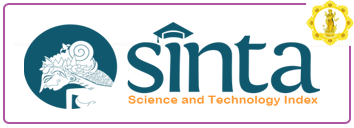Critical Literacy: A Universal Tool to Empower English Teachers and Learners
Abstract
Keywords
Full Text:
PDFReferences
Bean, T. W., & Moni, K. (2003). Developing students’ critical literacy: Exploring identity construction in young adult fiction. Journal of Adolescent & Adult Literacy, 46(8), 638–648.
Bourdieu, P. (1991). Language and Symbolic Power. In J. Thompson
Yavana Bhāshā: Journal of English Language Education 43 August 2020, Volume 3, Issue 2
(Ed.), Language and Symbolic Power. Polity Press.
Comber, B. (2001). Negotiating Critical Literacy. National Council of Teachers of English, 6(3), 1–2.
Crookes, G. V. (2013). Critical ELT in Action: Foundations, Promises, and Praxis. Routledge.
Freire, P. (1972). Pedagogy of the Oppressed. Penguin.
Freire, P., & Shor, I. (1987). A Pedagogy for Liberation: Dialogues on Transforming Education. MacMillan.
Janks, H. (2004, February). The access paradox. English in Australia, 139, 33–42. Janks, H. (2010). Literacy and Power. Routledge. Janks, H. (2017). Critical literacy and the social justice project of education. English Teaching: Practice & Critique, 16(2), 132–144. https://doi.org/https://doi.org/10. 1108/ETPC-09-2016-0111
Janks, H., Dixon, K., Ferreira, A., Granville, S., & Newfield, D. (2014). Doing Critical Literacy: Texts and Activities for Students and Teachers. Routledge.
Johnson, K. E. (1994). The emerging beliefs and instructional practices of preservice English as a second language teachers. Teaching & Teacher Education, 10(4), 439–452.
Lau, S. M. (2013). A study of critical literacy work with beginning English language learners: An integrated approach. Critical Inquiry in Language Studies, 10(1), 1–30. https://doi.org/10.1080/15427587. 2013.753841 Luk, J. C. M., & Lin, A. M. Y. (2006). Uncovering the sociopolitical situatedness of accents in the World Englishes paradigm. In R. Hughes (Ed.), Spoken English, TESOL and applied linguistics: Challenges for theory and practice (pp. 3–22). Palgrave Macmillan. McLaughlin, M., & DeVoogd, G. (2004a). Critical Literacy. Scholastic. McLaughlin, M., & DeVoogd, G. (2004b). Critical literacy as comprehension: Expanding reader response. Journal of Adolescent & Adult Literacy, 48(1), 52–62. https://doi.org/10.1598/JAAL.48.1 .5 Richards, J., & Rodgers, T. S. (2014). Approaches and Methods in Language Teaching (Third Edit). Cambridge University Press.
Vasquez, V. (2004). Negotiating critical literacies with young children. Erlbaum. Vasquez, V. (2010). Critical literacy isn’t just for books anymore. The Reading Teacher, 63(7), 614–616.
DOI: https://doi.org/10.25078/yb.v3i2.1710
Refbacks
- There are currently no refbacks.
Yavana Bhasha : Journal of English Language Education is indexed by

Yavana Bhasha : Journal of English Language Education site and its metadata are licensed under CC BY-SA



